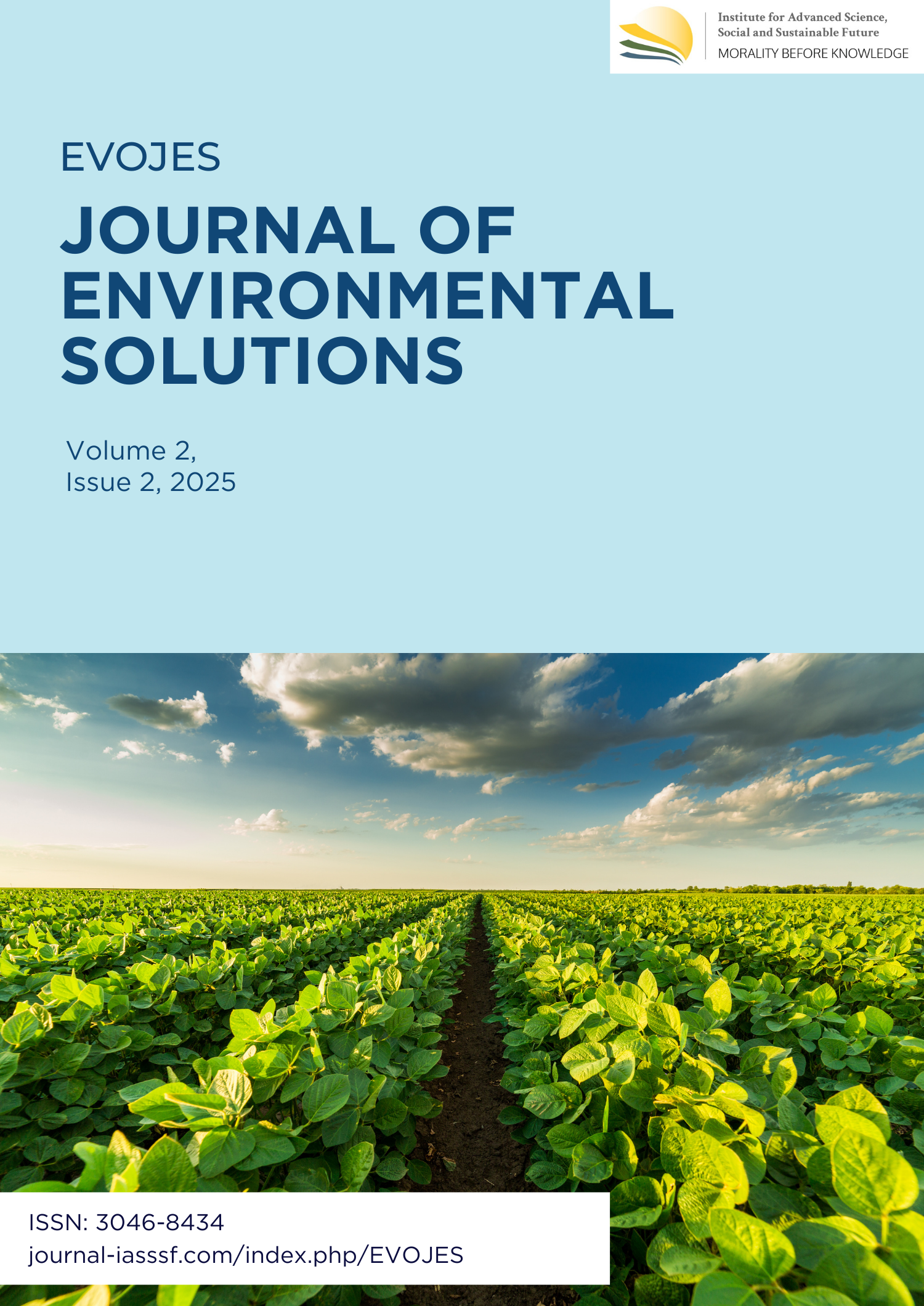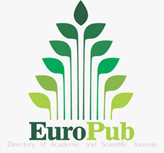The implementation of public sanitation policies to improve environmental health in urban communities
DOI:
https://doi.org/10.61511/evojes.v2i2.2025.2234Keywords:
sanitation policy, sanitation infrastructure, environmental healthAbstract
Background: Although sanitation policies have been implemented in many areas, there are still many challenges, such as limited infrastructure, lack of public awareness, and limited budgets for adequate sanitation management. Pangkep Regency, with its growing population, faces serious sanitation problems, especially in urban areas and densely populated neighbourhoods. Methods: This qualitative study aims to explore in depth the perceptions of the community and policy makers regarding the implementation of public sanitation policies and their impact on environmental health in urban areas of Pangkep Regency. Findings: The findings of this study show that although sanitation policies have been implemented in Pangkep Regency, their implementation still faces various obstacles. As many as 40% of sanitation facilities in urban areas do not meet hygiene and safety standards, while 60% of sanitation facilities in densely populated neighbourhoods experience problems in managing liquid waste and garbage, which has the potential to pollute the environment. Conclusion: Some of the main problems found are limited sanitation infrastructure, lack of public awareness, and limited funds, which affect the success of sanitation policies. Novelty/Originality of this article: This article focuses on sanitation conditions in Pangkep Regency, directly analysing the obstacles, impacts, and challenges of sanitation policies in urban areas and densely populated neighbourhoods. This study highlights the importance of adequate sanitation infrastructure in the success of policies and links the lack of proper sanitation facilities to the high prevalence of sanitation-related diseases.
References
Abubakar, I. R., Maniruzzaman, K. M., Dano, U. L., AlShihri, F. S., AlShammari, M. S., Ahmed, S. M. S., … Alrawaf, T. I. (2022). Environmental Sustainability Impacts of Solid Waste Management Practices in the Global South. International Journal of Environmental Research and Public Health 2022, Vol. 19, Page 12717, 19(19), 12717. doi:10.3390/IJERPH191912717
Alamsyah, M., Dinihari, Y., Siburian, M. F., Marhento, G., Pratama, R., & Jonathan, G. L. (2024). Integrated Biogas Education as Renewable Energy in Banyumudal Village. Journal of Community Service in Biology and Science, 3(2), 93–100. doi:10.30998/JPMBIO-SAINS.V3I2.3402
Ariska, A., Utama, Muh. F. L., Timang, N. Y., Kamaluddin, B., & Ashury, A. (2019). ANALYSIS OF SANITATION AND COMMUNITY AWARENESS REGARDING WASTE MANAGEMENT AT KAYU BANGKOA PIER. Marine Science and Technology Research, 2(1), 152–157. doi:10.62012/SENSISTEK.V2I1.13283
Article Accepted, I., Desputri, S., Arika, R., Muhajirina, D., Tanjung, S. Z., Aulia, A., … Harahap, R. S. (2023). The Relationship Between Environmental Health and Socio-Cultural Influences on Coastal Communities in the 29 Pekan Labuhan Area. JPP (Journal of Health, Palembang Polytechnic), 18(2), 138–145. doi:10.36086/JPP.V18I2.2084
Chakravarty, I., Bhattacharya, A., & Das, S. K. (2017). Water, sanitation and hygiene: The unfinished agenda in the World Health Organisation South-East Asia Region. WHO South-East Asia Journal of Public Health, 6(2), 22–33. doi:10.4103/2224-3151.213787
Desai, B. H. (2022). 14. United Nations Environment Programme (UNEP). Yearbook of International Environmental Law, 31(1), 319–325. doi:10.1093/YIEL/YVAB060
Hukunala, C., Pinoa, S., Partini, D., Partisipasi, A., Dalam, M., Wisata, P., … Sephnath Pinoa, W. (2025). Guidelines for Community Participation in the Development of Air Babunyi Beach Tourism in Mepa Village, Leksula District, South Buru Regency. Hatunuku: Journal of Social Studies Education, 1(2), 178–193. doi:10.62710/3TRBRM96
K, Lavanya., & Leela, Dr. V. (2025). UNICEF – Strategy for Water, Sanitation and Hygiene (WASH) . Journal of Scientific Research and Technology, 252–260. doi:10.61808/JSRT278
Kecamatan, P., Sei, P., Novrida, T., Hasibuan, H., Suryati, I., Khairani, F., … Dalimunthe, P. (2022). Optimisation of Sanitation Facilities to Support Open Defecation Free (ODF) Programmes in Dusun 13, Percut Village, Percut Sei Tuan District. ABDIMAS TALENTA: Journal of Community Service, 7(1), 407–418. doi:10.32734/ABDIMASTALENTA.V7I1.6968
Malik, K., Jespersen, E., Bhattacharjee, S., Bonini, A., Calderon, C., Fuchs, A., … Juarez-Shanahan, F. (2014). Human Development Report 2014 Team Communications and publishing National Human Development Reports Operations and administration. Retrieved from http://hdr.undp.org
Martinez, L., Leon, E., Al Youssef, S., & Katrina Karaan, A. (2020). Strengthening the health lens in urban resilience frameworks. Cities & Health, 1–8. doi:10.1080/23748834.2020.1731918
Paramasatya, A., Arminsih Wulandari, R., Master's Degree in Public Health, P., & Public Health, F. (2023). JAMBURA JOURNAL OF HEALTH SCIENCE AND RESEARCH CORRELATION BETWEEN ACCESS TO SANITATION AND ACCESS TO DRINKING WATER AND THE INCIDENCE OF STUNTING IN TODDLERS IN THE SERANG DISTRICT IN 2022 CORRELATION OF ACCESS TO SANITATION AND ACCESS TO DRINKING WATER STUNTING INCIDENCE IN TODDLERS IN THE REGION OF SERANG DISTRICT IN 2022. Retrieved from https://ejurnal.ung.ac.id/index.php/jjhsr/index
Sarjito, A. (2024). THE IMPACT OF POVERTY ON ACCESS TO HEALTH SERVICES IN INDONESIA. Journal of Social, Political and Governmental Sciences, 13(1), 397–416. doi:10.37304/JISPAR.V13I1.10520
Schiedek, L., Gabrielsson, S., Jiménez, A., Giné, R., Roaf, V., & Swain, A. (2021). Assessing national WaSH targets through a water governance lens: a case study of the Sanitation and Water for All partnership commitments. Journal of Water, Sanitation and Hygiene for Development, 11(5), 805–813. doi:10.2166/WASHDEV.2021.049
Singla, P., Singh, A., Gupta, A., & Garg, S. (2024). Adaptive Urban Planning: A Hybrid Framework for Balanced City Development. Retrieved from https://arxiv.org/abs/2412.15349v1
Sinharoy, S. S., Pittluck, R., & Clasen, T. (2019). Review of drivers and barriers of water and sanitation policies for urban informal settlements in low-income and middle-income countries. Utilities Policy, 60, 100957. doi:10.1016/J.JUP.2019.100957
Syahrizal, S. (2023). The effect of implementing the Community-Based Total Sanitation (STBM) programme on the incidence of diarrhoea in the Darul Imarah Community Health Centre working area. Jurnal SAGO Gizi Dan Kesehatan, 4(2), 315–321. doi:10.30867/GIKES.V4I2.1261
Weststrate, J. (2023). The persistent gap in urban sanitation. Cities, 132, 103997. doi:10.1016/J.CITIES.2022.103997
Wolf, J., Johnston, R. B., Ambelu, A., Arnold, B. F., Bain, R., Brauer, M., … Cumming, O. (2023). Burden of disease attributable to unsafe drinking water, sanitation, and hygiene in domestic settings: a global analysis for selected adverse health outcomes. The Lancet, 401(10393), 2060–2071. doi:10.1016/S0140-6736(23)00458-0/ATTACHMENT/BED09094-E35B-4282-8952-3DFEE56EDC90/MMC2.XLSX
Zhang, Z., Zhao, M., Zhang, Y., & Feng, Y. (2023). How does urbanisation affect public health? New evidence from 175 countries worldwide. Frontiers in Public Health, 10, 1096964. doi:10.3389/FPUBH.2022.1096964/BIBTEX
Published
How to Cite
Issue
Section
Citation Check
License
Copyright (c) 2025 Adi Hemawan, Muhammad Syafri

This work is licensed under a Creative Commons Attribution 4.0 International License.














